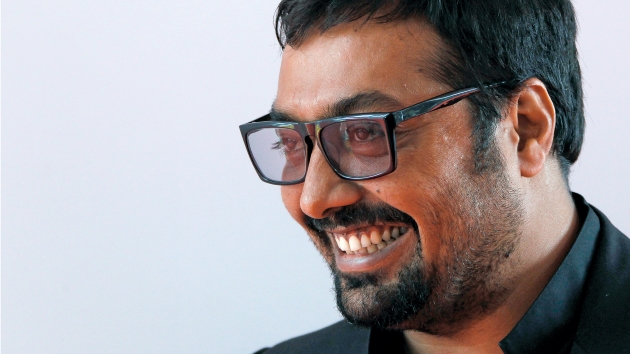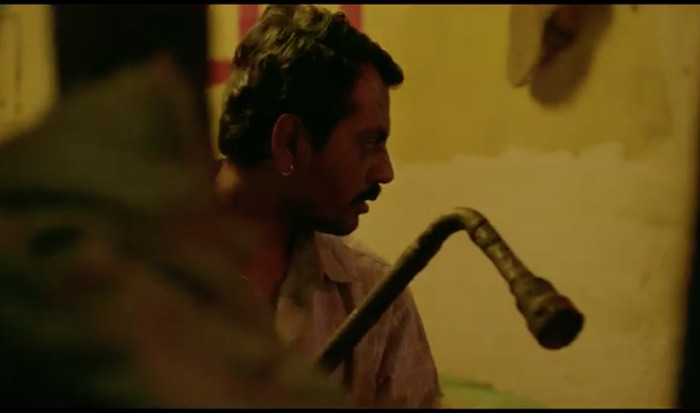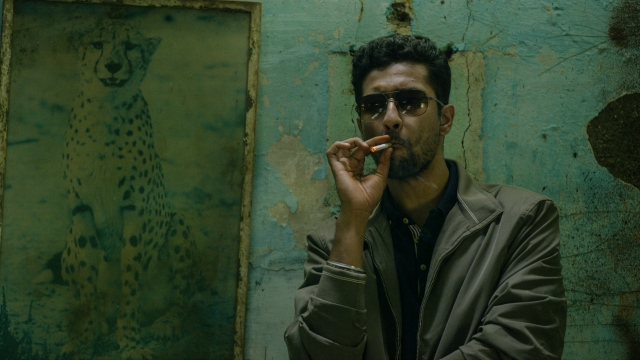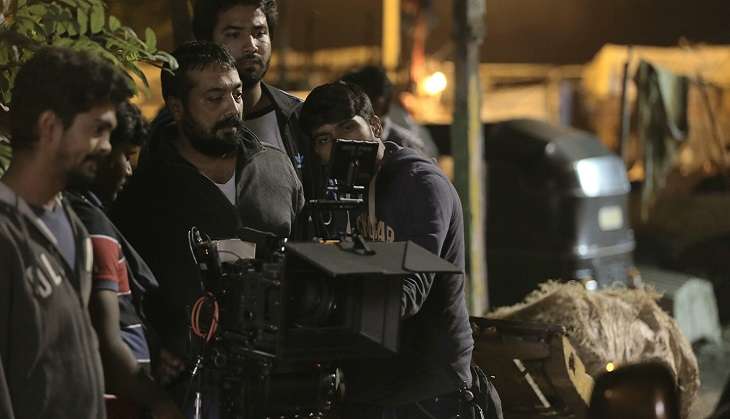TO DIE FOR: THE ANURAG KASHYAP INTERVIEW
 Friday, June 24, 2016 at 11:12AM
Friday, June 24, 2016 at 11:12AM His best films are confronting, contemporary works that challenge India’s filmmaking culture. Similarly, Anurag Kashyap defies expectations as an interviewee; his stare is intense, but his manner is gentle, his voice clear but soft. And fast; his perfect English and fierce intelligence makes it a challenge to keep pace. The 42 year-old director, best known for the visceral 2012 crime epic Gangs of Wasseypur, is in Cannes to shepherd his latest through a Director’s Fortnight slot; Raman Raghav 2.0 is a purely cinematic re-imagining of the life of India’s most notorious serial killer, whose random brutality terrorised Mumbai locals in the mid 1960s. “He is the Jack the Ripper of India, and we stuck to the facts of the case very closely,” says Kashyap, midway through a lengthy chat with SCREEN-SPACE in a 5th floor lounge, a few blocks from The Croisette…

SCREEN-SPACE: How long have you wanted to tell this story?
Kashyap: When I got into the business of moviemaking, my first job as an apprentice was during post-production on a film based on the life of Raman Raghav. I never knew of him before, but I was writing crime short stories so I immediately became curious. I had access to all this material and was soon obsessed with making a film on Raman Raghav, an obsession that lasted 23 years.
SCREEN-SPACE: Why has it taken so long for you to realise the project?
 Kashyap: We’ve had this script for the last six years, but I just couldn’t get the money to make the film. In India, we make very happy movies and a dark film like this, and a period film as well which immediately means it will cost a lot of money, no studio felt it would be feasible. But I was so invested in the story. And then, a lot of changes started to happen in India, politically and socially. Suddenly there is a lot fear in society; modern living became scarier, both in India and around the world. People have become so fearful of fundamentalism that they have become fundamentalists themselves. It was then that I realised the only way I was going to get the film made was to contemporise it. I actually had the title before I had the script! Raman Raghav 2.0, an updated version, like an iPhone (laughs). (Pictured, right; Nawazuddin Siddiqui in the title role)
Kashyap: We’ve had this script for the last six years, but I just couldn’t get the money to make the film. In India, we make very happy movies and a dark film like this, and a period film as well which immediately means it will cost a lot of money, no studio felt it would be feasible. But I was so invested in the story. And then, a lot of changes started to happen in India, politically and socially. Suddenly there is a lot fear in society; modern living became scarier, both in India and around the world. People have become so fearful of fundamentalism that they have become fundamentalists themselves. It was then that I realised the only way I was going to get the film made was to contemporise it. I actually had the title before I had the script! Raman Raghav 2.0, an updated version, like an iPhone (laughs). (Pictured, right; Nawazuddin Siddiqui in the title role)
SCREEN-SPACE: What was key to transplanting such a protagonist into modern day Indian society?
Kashyap: When I started writing, all these modern fears started to seep into the story. Working from my imagination and creating the mindset of the character, I realised he viewed himself as a much more pure person. Here is a criminal, a brutal criminal, who we know is going to kill, but then there is another man, a policeman who is supposed to protect me but who is also a killer, with his own reasons and conclusions. The serial killer murders because he wants to, that is easy to rationalise; it is a purity of thought. It is a complex philosophy, however warped it may be.
 SCREEN-SPACE: Between Nawazuddin Siddiqui’s homicidal psychopath and Vicky Kaushal’s corrupt, unhinged cop (pictured, right), might audiences find it hard to root for anyone?
SCREEN-SPACE: Between Nawazuddin Siddiqui’s homicidal psychopath and Vicky Kaushal’s corrupt, unhinged cop (pictured, right), might audiences find it hard to root for anyone?
Kashyap: The audience is forced to root for the world that these characters co-exist in. I am rooting for what is outside of the room when the two of them share a scene. I hope that someday, society will learn what goes on when two people like this are together, how they manipulate reality for their own gain. That is the world today and that is what the film represents. I wouldn’t be allowed to address the politics of the story directly in my country, so I address within the construct of a genre film. Genre films have always played that purpose, subverting the politics of their society. When this film comes out in India, people will start to discuss and debate its politics. I want that discussion to take place.
SCREEN-SPACE: The two men certainly represent two sides of the same coin, as it were…
Kashyap: ‘Raman’ is the name of the villainous god in Indian mythology. But in Sri Lanka, the same ‘Raman’ is the hero. So our religion, our very belief systems, has this dichotomy about the co-existence of good and evil. In India, there is much discussion about this aspect of our existence, of belittling one belief system in favour of your own. That intolerance is what is afflicting the world at the moment.
SCREEN-SPACE: Are you concerned that the film might glorify the killer? Of turning him into a ‘Robin Hood’-type anti-hero?
 Kashyap: Indian people know the story of the real Raman Raghav and they won’t confuse this movie’s version of him with the terrible person he was in real life. I’m doing more than projecting him as an anti-hero. I’m using the fact that audiences who flock to see him already view him as an anti-hero. This film is not a ‘whodunnit’, it is not about who is the serial killer; audiences go into the film knowing who the protagonist is. You know, I showed my actors and crew two films, Let the Right One In and We Are What We Are. These are neo-realistic films, about vampires and cannibals, which barely touch on the horror of their existence. I wanted to stress that we did not want to make a film about a serial killer, but about an individual trying to survive in a society with which his belief system is entirely at odds. (Pictured, right; Kashyap, centre, during the shoot).
Kashyap: Indian people know the story of the real Raman Raghav and they won’t confuse this movie’s version of him with the terrible person he was in real life. I’m doing more than projecting him as an anti-hero. I’m using the fact that audiences who flock to see him already view him as an anti-hero. This film is not a ‘whodunnit’, it is not about who is the serial killer; audiences go into the film knowing who the protagonist is. You know, I showed my actors and crew two films, Let the Right One In and We Are What We Are. These are neo-realistic films, about vampires and cannibals, which barely touch on the horror of their existence. I wanted to stress that we did not want to make a film about a serial killer, but about an individual trying to survive in a society with which his belief system is entirely at odds. (Pictured, right; Kashyap, centre, during the shoot).
SCREEN-SPACE: Your leading man, Nawazuddin Siddiqui, said this of you: “When he is behind the camera, I feel his supportive hand pushing me to break new ground and redefine boundaries…”
Kashyap: He is the clay I need to mould a character. Graciously, he allows me to do that. That trust comes from 17, 18 years of struggle together. In the early years, I promised him that we would make a film together and I would put him at the centre of it. I cast him in his first speaking role, two lines as a waiter in 1997 (laughs). We have such a comfort zone together. And that level of understanding and communication was crucial, as we only had three weeks to shoot. I sat down during pre-production and separated scenes and allocated dollars. All the sequences in the street were shot with a crew of four. We literally jumped out of a van, shot the footage, and left (laughs).
Raman Raghav 2.0 debuts Friday June 24 in worldwide release.
 Cannes,
Cannes,  Indian Cinema,
Indian Cinema,  Raman Raghav,
Raman Raghav,  Serial Killer
Serial Killer 


